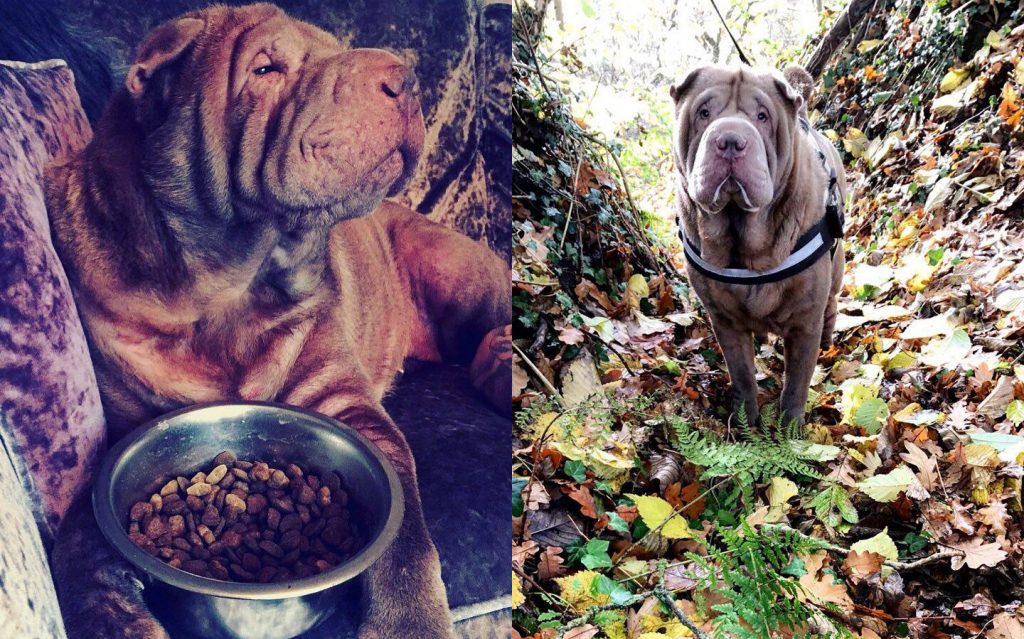Breed Profile – Shar Pei
30/03/2018
An intriguing Chinese breed is the focus of this breed profile. Bred to guard, fight and hunt, the Shar Pei actually has an affectionate nature. Their interesting coat is their unique characteristic.
History of the Breed: Also known as the Chinese Shar Pei, this interesting breed originated in China as a guard, fighting and hunting dog. Probably related to the Chow Chow, the name translates as ‘harsh sandy coat’, a reference to the bristly coat that is a distinctive feature of the breed. The harsh coat combined with the loose skin prevented other dogs from getting a good grip in a fight. Despite their fighting background, the Shar Pei is a calm, affectionate breed that forms strong attachments with their owners. There are slight differences between the traditional Chinese version and the ‘western’ Shar Pei, which has more intense features.
Life Expectancy: About ten years.
Size: Medium, with a height range of 46-51cm and a weight range of 18-25kg.
Features: Shar Pei puppies have looser skin than adults as the breed ‘grows into’ its wrinkles somewhat. However adult dogs retain wrinkles on the face and neck, with some moderate wrinkling over the shoulders and tail. The characteristic coat comes in any colour but white and has no undercoat. It brushes soft one way and bristly the other. Shar Peis also have a distinctive square build with strong legs and a high set tail.The ‘hippo-like’ head is another unique feature of the breed. This look comes from the large head with flat skull, broad muzzle, wide nose and padded lips. Eyes are usually dark but can be amber in lighter shades. Noses are also usually black but can be a colour that complements the coat. Ears are very small and triangular in shape, set high on the skull with tips pointing towards eyes.
Energy Levels/Exercise Required: The Shar Pei requires up to one hour of exercise per day.
Potential Health Problems: Shar Peis are prone to entropion, a painful eye condition which causes the eyelid to turn inwards. This pushes the eyelashes against the eye itself, severely irritating the eye and eventually damaging the cornea in the long term. This can be solved with surgery. Potential Shar Pei owners should ask breeders about the eye health of the parents.
Atopic dermatitis, a chronic allergic skin disease, is another problem for this breed. Anecdotally, this can be worse in females that are in season and spaying may help improve skin issues. A diet high in essential fats and oils such as Omega 3 and 6 is also known to help skin conditions. Dr John Titanium contains 15% fats and oils, which includes Omega 3 and 6, and caters for junior, adolescent and adult working dogs.
Shar Pei fever (FSF or familial Shar Pei fever) is a potentially serious genetic condition affecting the breed. Usually brought on by physical or emotional stress, such as being separated from owners or left alone for long periods, the condition shows itself in recurring fevers and swelling in the hocks. Affected dogs will be susceptible to repeated attacks of FSF, which can eventually lead to kidney and liver damage.
Other possible health issues include ear problems, due to a tight inner ear structure, and vitamin B12 deficiency.
Temperament: Despite their history as a guard dog and hunter, the Shar Pei is calm and alert, showing no signs of aggression. However they are wary of strangers. They are an affectionate breed and devote themselves to the people they become familiar with.
Child Friendly/Family Dog: The Shar Pei is equally at home in town or country and can be happy in smaller houses with a small outside space. As they are so affectionate and loyal to their owners, they make perfect family pets with appropriate, early socialising.
Likes: Companionship, affection.
Dislikes: Loud noises, solitude, strangers.
Many thanks go to Ruth Neil for additional Shar Pei owner information and the lovely photos of Dollie.



